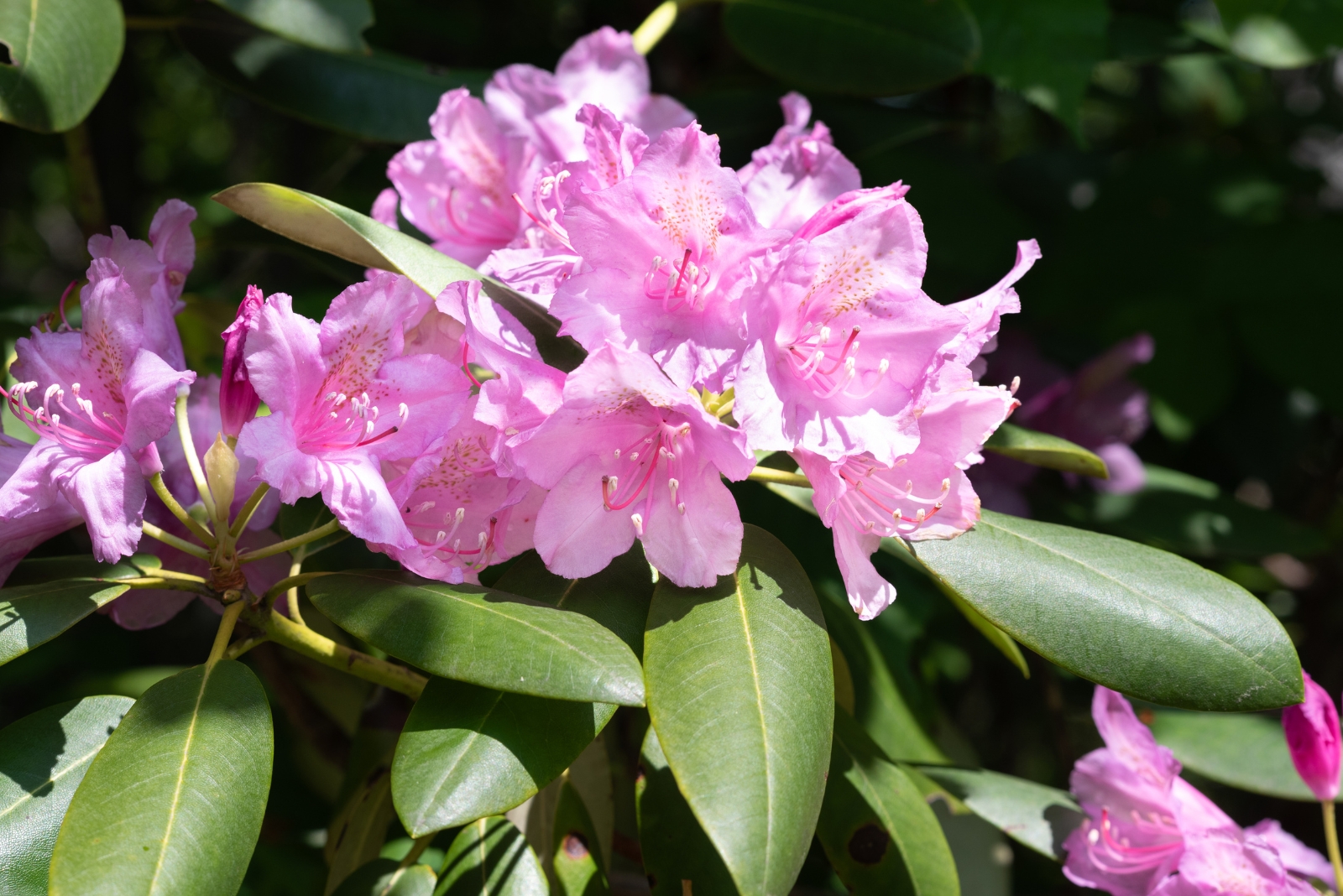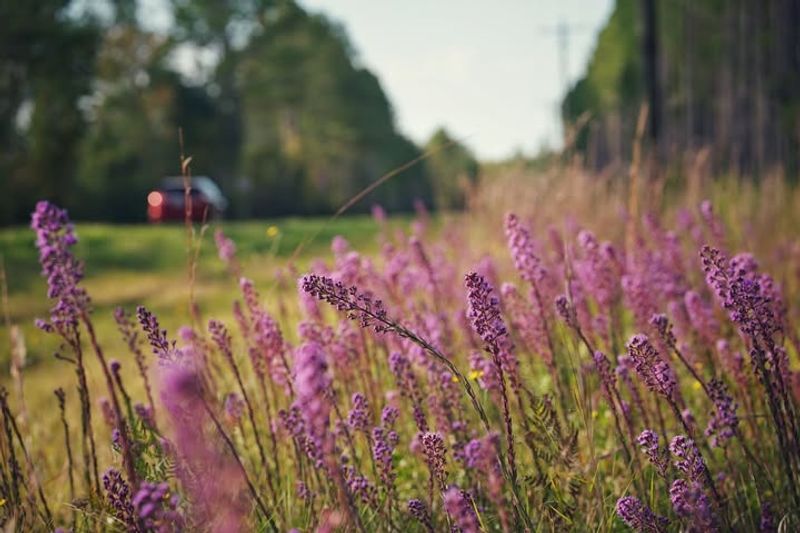Some plants appear common beside roads or in neighborhood lots, yet hold high ecological value. A single removal can disrupt pollinators, soil stability, and natural recovery cycles.
Florida agencies classify several species as protected due to rarity or vulnerability. Respect for those rules preserves the character of the landscape.
1. Wild Coonties
Florida’s only native cycad has been around since dinosaur times, making it a living fossil worth protecting. Wild coonties play a crucial role in local ecosystems, serving as the sole food source for Atala butterfly caterpillars.
State regulations prohibit removing these plants from public lands without proper permits. Nursery-grown coonties are available legally if you want one for your garden.
Always check plant origins before purchasing to ensure you’re supporting legal cultivation practices.
2. Florida Trillium
Spotting a Florida trillium feels like discovering hidden treasure in the forest. Found only in a few northern Florida counties, this delicate wildflower faces extinction threats from habitat loss and illegal collection.
State law strictly forbids digging up or moving these plants from their natural homes. Each plant takes years to mature and produce flowers, making population recovery extremely slow.
Enjoy their springtime blooms in protected areas, but resist any temptation to transplant them elsewhere.
3. Torreya Trees
Once common along the Apalachicola River, torreya trees now teeter on the brink of extinction. A devastating fungal disease wiped out most of the population, leaving only a few hundred struggling survivors in the wild.
Federal and state protections make it illegal to remove these trees without authorization. Scientists are working desperately to save the species through breeding programs and disease research.
Any remaining wild specimens are precious genetic resources that must stay protected in their native habitat.
4. Butterfly Orchids
With petals that flutter like wings, butterfly orchids captivate anyone lucky enough to see them. Several species native to Florida face serious threats from habitat destruction and over-collection by enthusiasts.
Removing these epiphytes from trees violates conservation laws designed to prevent their disappearance. Commercial orchid growers offer legally propagated alternatives for collectors wanting to enjoy their beauty at home.
Supporting ethical nurseries helps reduce pressure on wild populations while satisfying your plant passion legally.
5. Wireweed
Don’t let its humble appearance fool you—wireweed is a botanical rarity that deserves protection. This unassuming plant grows only in Florida’s threatened scrub habitats, which continue shrinking due to development.
State regulations prohibit collecting or relocating wireweed to preserve remaining populations. Loss of scrubland affects countless species that depend on this unique ecosystem for survival.
Conservation groups work tirelessly to purchase and protect scrub habitat before it disappears forever under concrete and asphalt.
6. Hooded Pitcher Plants
Nature’s perfect insect trap, hooded pitcher plants fascinate with their carnivorous lifestyle and striking appearance. Found in Florida’s panhandle wetlands, these incredible plants face habitat loss from drainage and development projects.
Collecting wild pitcher plants violates state protection laws meant to ensure their survival. Bog ecosystems where they thrive are increasingly rare and need active conservation efforts.
Specialty nurseries sell cultivated specimens legally, allowing you to grow these amazing plants without harming wild populations or breaking laws.
7. Chapman’s Rhododendron
Bursting with pink blooms each spring, Chapman’s rhododendron grows nowhere else on Earth except Florida’s panhandle. Habitat destruction and plant collectors have pushed this beautiful shrub toward endangerment.
Laws protect remaining wild populations from removal or disturbance by unauthorized individuals. Steep ravine slopes where they naturally occur provide specific conditions difficult to replicate elsewhere.
Photographing these spectacular flowers during bloom season offers a wonderful way to appreciate them while respecting conservation regulations and natural habitats.
8. Scrub Blazing Star
Standing tall with purple flower spikes, scrub blazing star adds dramatic color to Florida’s scrublands. Urbanization has destroyed much of its natural habitat, leaving only scattered populations in protected areas.
State and federal laws prohibit removing these plants from the wild to prevent further population decline. Fire suppression has also harmed this species, which evolved to thrive after periodic natural burns.
Land managers now use controlled burns to maintain healthy scrub ecosystems that support blazing stars and countless other specialized species.
9. Florida Skullcap
Part of the mint family, Florida skullcap produces charming blue flowers in shaded woodland areas. Limited distribution and habitat loss have made this plant increasingly vulnerable to extinction.
Protection laws prevent collectors from digging up wild skullcap for gardens or herbal use. Wetland destruction poses the greatest threat to remaining populations scattered across northern Florida.
Wetland conservation initiatives help protect not just skullcap but entire communities of plants and animals dependent on these precious water-rich ecosystems.
10. Four-Petal Pawpaw
Unlike its common cousin, the four-petal pawpaw grows only in Florida’s dwindling scrub habitats. Maroon flowers with four petals instead of the usual six make this shrub botanically fascinating and visually distinctive.
Endangered species protections strictly forbid removing or harming these rare plants in their natural environment. Development pressures continue threatening the specialized scrubland ecosystems where four-petal pawpaws struggle to survive.
Conservation organizations fight to preserve remaining scrub patches, understanding that losing habitat means losing irreplaceable species forever.











